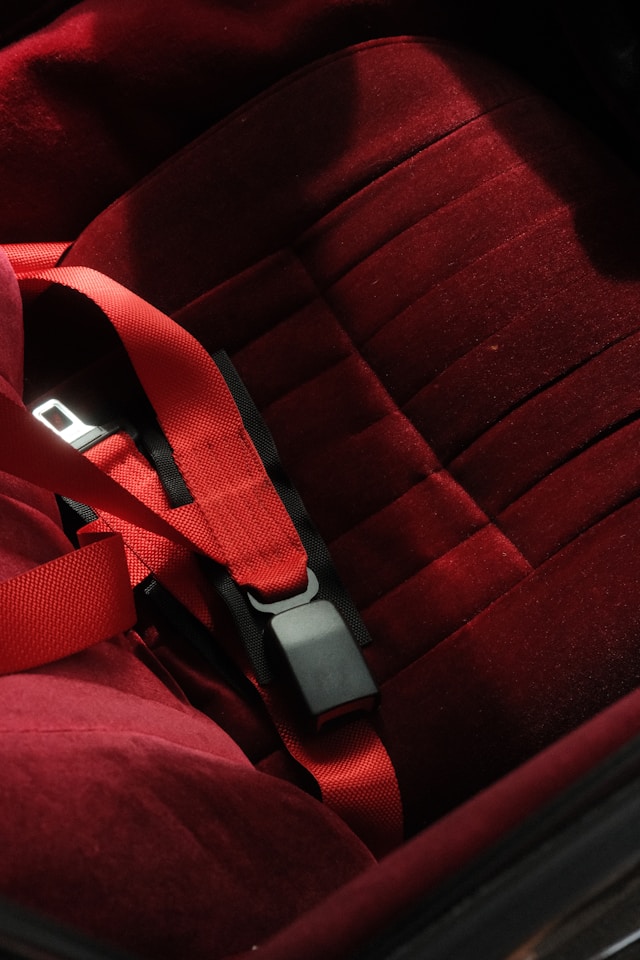The automotive industry has undergone a dramatic transformation over the last century, especially in terms of passenger safety. What began as simple mechanical systems to reduce injury during collisions has evolved into a high-tech ecosystem of sensors, software, and smart systems designed to protect lives. In today’s vehicles, safety isn’t an afterthought—it’s a core component of the design process.
This blog will explore the timeline of car safety advancements, emphasizing the critical role of seatbelts, and how they paved the way for cutting-edge technologies like Advanced Driver-Assistance Systems (ADAS). As vehicles become increasingly autonomous, understanding the evolution of safety technologies is more relevant than ever.
Early Years: Minimal Protection in Automobiles
During the early days of the automobile in the late 19th and early 20th centuries, safety was far from a priority. Cars were seen as innovative transportation machines, not potential hazards. Most early models lacked basic safety equipment such as windshields, mirrors, or even enclosed cabins.
The first automobiles were simple in design and often unstable. Speeds were relatively low, but even minor accidents could prove fatal. There was a growing realization that something had to change as roads got busier and faster.
Seatbelts were not part of the original vehicle design, and most drivers had to rely on instinct and luck to avoid injury. At this point, crash fatalities were often attributed to the driver’s fault or road conditions rather than the vehicle’s construction.
The Introduction of Seatbelts: A Life-Saving Invention
The 1950s marked a turning point in car safety with the widespread introduction of seatbelts. Originally invented in the early 20th century, seatbelts didn’t gain traction until the mid-century when crash research showed their undeniable effectiveness in saving lives.
Volvo engineer Nils Bohlin revolutionized automotive safety in 1959 by introducing the three-point seatbelt. This design, which anchors the belt across the chest and hips, proved to be a game-changer. Volvo generously waived its patent rights, allowing all car manufacturers to implement the technology.
Despite initial public resistance—many drivers believed seatbelts were restrictive or unnecessary—governments began to mandate their use. Studies soon confirmed that wearing a seatbelt could reduce the risk of death in a crash by up to 50%.
Today, seatbelts remain one of the most effective safety measures in vehicles. They serve as a foundation upon which more complex systems are built.
Airbags: Complementing the Seatbelt
While seatbelts restrain occupants during a crash, airbags act as a cushion to reduce the impact forces. Introduced in the 1970s, airbags quickly gained popularity and became standard equipment in most passenger vehicles by the 1990s.
Unlike seatbelts, which require the driver or passenger to take action, airbags deploy automatically upon impact. This passive system increased survival rates in severe collisions, especially in frontal impacts.
Airbags didn’t replace seatbelts; instead, they complemented them. The two systems work together to provide optimal protection. Without a seatbelt, an airbag’s effectiveness significantly diminishes, and in some cases, it can even cause injury.
As technology advanced, manufacturers introduced side airbags, curtain airbags, and even knee airbags to enhance occupant safety in all types of crashes.
The Rise of Crumple Zones and Structural Engineering
Another major advancement in automotive safety came in the form of crumple zones—sections of the vehicle designed to deform and absorb crash energy. First introduced in the 1950s, this innovation helped redirect forces away from passengers.
Modern cars use advanced structural engineering to create “safety cages” that remain rigid during a crash while other parts absorb the brunt of the impact. This approach minimizes internal damage and injury.
While seatbelts keep occupants securely in place, crumple zones reduce the severity of the impact itself. Together, they create a two-pronged approach to crash survival: restrain and absorb.
These engineering marvels represent a shift from reactive to proactive safety measures, changing how vehicles are built from the ground up.
Electronic Stability Control and Traction Systems
In the 1990s and early 2000s, technology began to play a more active role in vehicle safety. Electronic Stability Control (ESC) systems, which prevent skidding and loss of control, became standard features in many cars.
ESC uses a combination of sensors and microprocessors to detect when a vehicle begins to lose traction. It automatically adjusts braking and engine power to help the driver regain control. This technology drastically reduced the number of rollovers and single-vehicle crashes.
Though not directly related to seatbelts, ESC highlights the trend toward technology-assisted driving. These systems work best when paired with mechanical safety measures, creating multiple layers of defense.
Traction control, anti-lock braking systems (ABS), and other digital aids began appearing alongside traditional safety measures, setting the stage for more autonomous interventions in the future.
Advanced Driver-Assistance Systems (ADAS): The Future of Car Safety
As vehicles become more intelligent, safety is increasingly about prediction and prevention rather than mere protection. Advanced Driver-Assistance Systems (ADAS) represent the cutting edge of automotive safety.
Features like adaptive cruise control, lane-keeping assistance, collision detection, and automatic emergency braking are now available in even mid-range vehicles. These systems use cameras, radar, and artificial intelligence to detect hazards and react in real time.
While seatbelts protect you during an accident, ADAS aims to avoid the accident altogether. For instance, forward collision warning systems can alert drivers before impact, while lane-departure systems gently guide the vehicle back into its lane.
Some ADAS features require driver input, while others operate automatically. This hybrid approach reflects the transitional nature of our current vehicle landscape—part human, part machine.
Integration of Seatbelts with Modern Systems
Despite all these technological advancements, seatbelts have not become obsolete. In fact, they’re more important than ever. Many ADAS systems and crash response technologies rely on the status of the seatbelt for activation.
For example, modern cars often won’t deploy airbags or activate crash avoidance systems unless the seatbelt is engaged. Additionally, systems like Pre-Safe in Mercedes-Benz vehicles can tighten seatbelts automatically when a crash is imminent.
This integration demonstrates that seatbelts are not a relic of the past but an essential component of the present and future. They remain a legal requirement and a foundational safety feature that modern innovations still depend on.
Public Awareness and Education

One of the biggest challenges in automotive safety has been public perception and compliance. Even with laws in place, many people neglect to wear seatbelts, especially in back seats or short trips.
Education campaigns such as “Click It or Ticket” have played a crucial role in promoting seatbelt use. Schools, driving courses, and public service announcements consistently reinforce the message: seatbelts save lives.
As new technologies emerge, educating the public on how to properly use them is just as important as the tech itself. For instance, many ADAS features have limitations that drivers must understand to use them safely and effectively.
The Role of Government Regulations and Crash Testing
Safety improvements often result from a combination of innovation and regulation. Governments around the world have implemented stringent safety standards that manufacturers must meet. These include mandatory seatbelt installation, crash test ratings, and emissions standards that indirectly affect vehicle weight and design.
Organizations like the National Highway Traffic Safety Administration (NHTSA) and Euro NCAP conduct crash tests that inform consumers about a vehicle’s safety rating. Cars with poor ratings often see reduced sales, incentivizing manufacturers to prioritize safety.
These regulations also lead to mandatory inclusion of seatbelts in school buses, commercial vehicles, and even public transportation in some regions.
The Psychology of Safety: Why Seatbelts Work
From a psychological perspective, seatbelts offer a sense of control and security. When people buckle up, they’re engaging in a simple, conscious action that has significant consequences.
Studies show that wearing a seatbelt not only protects physically but also encourages safer driving behavior. Drivers who buckle up are less likely to engage in risky driving, like speeding or texting while driving.
Additionally, the audible and visual reminders in modern cars that prompt users to fasten their seatbelts have proven to be effective nudges in increasing usage rates.
Innovations in Seatbelt Technology
Even the humble seatbelt has seen innovation. Modern enhancements include pre-tensioners that tighten the belt in anticipation of a crash and load limiters that reduce pressure on the chest.
Some luxury vehicles now include inflatable seatbelts, which spread out crash forces across a larger area of the body, reducing injury. Others use smart sensors to detect occupancy and adjust seatbelt tension accordingly.
Research continues into new materials and designs that could improve comfort without sacrificing safety. The future might even see seatbelts that communicate with other car systems to offer real-time biometric feedback.
Autonomous Vehicles and the Next Chapter in Car Safety
As we move toward a future dominated by self-driving cars, the role of traditional safety systems like seatbelts remains essential. Even in fully autonomous vehicles, crash risks still exist—from other drivers, mechanical failures, or unexpected obstacles.
Designers are now rethinking cabin layouts, which could affect how seatbelts are implemented. New solutions may be needed to protect passengers who aren’t always seated in traditional upright positions.
Regardless of how vehicles change, the fundamental principles of crash physics remain the same. Seatbelts will continue to be a first line of defense, even as software takes the wheel.
Safety is a Shared Responsibility
The evolution of automotive safety is a testament to human ingenuity. From the early days of unprotected driving to today’s smart, sensor-packed vehicles, every advancement has built upon the last.
Yet, the simple act of buckling a seatbelt remains one of the most powerful decisions a driver or passenger can make. As we embrace new technologies, we must not forget the basics. Safety starts with us.

